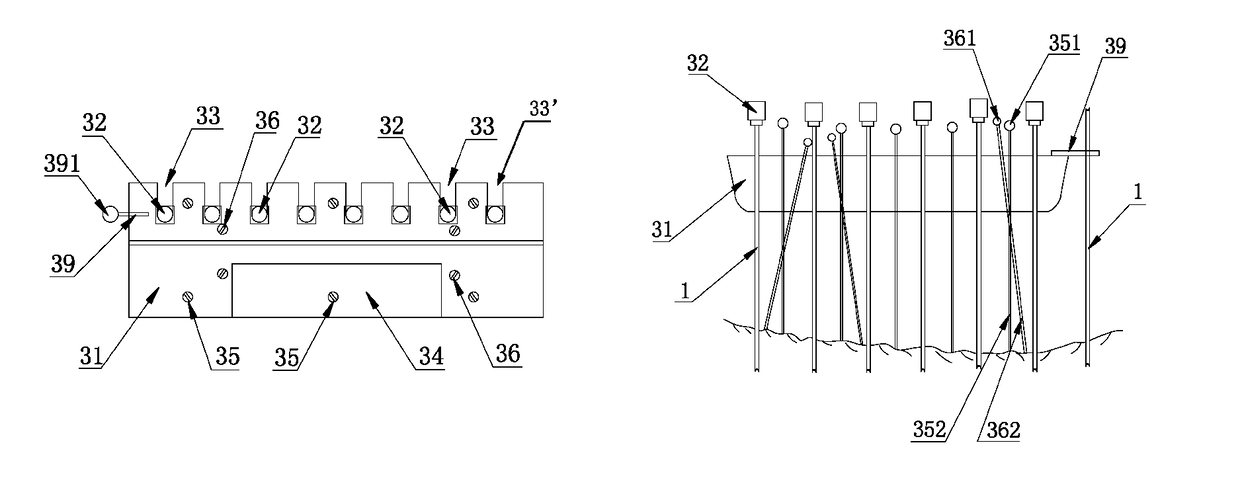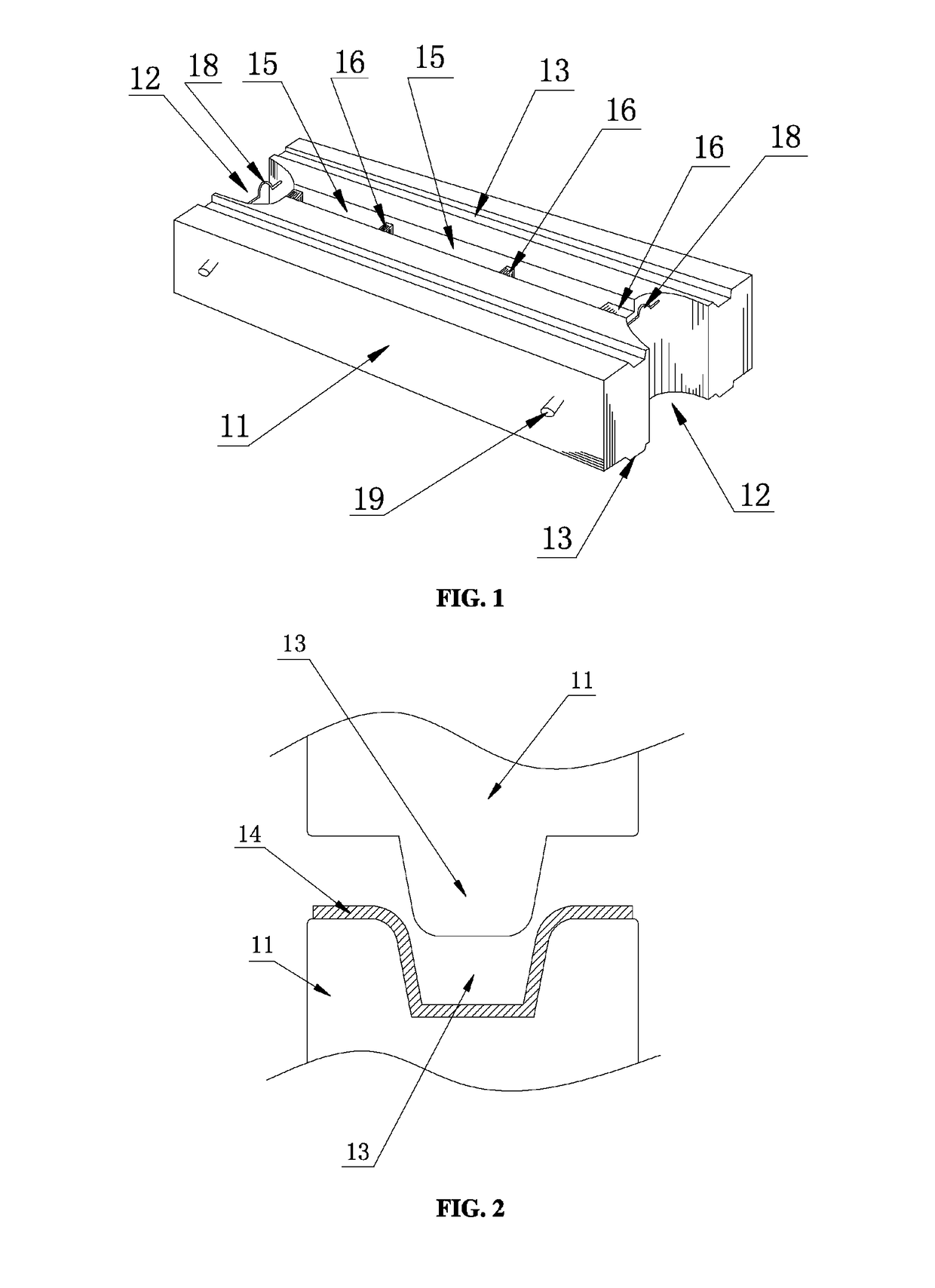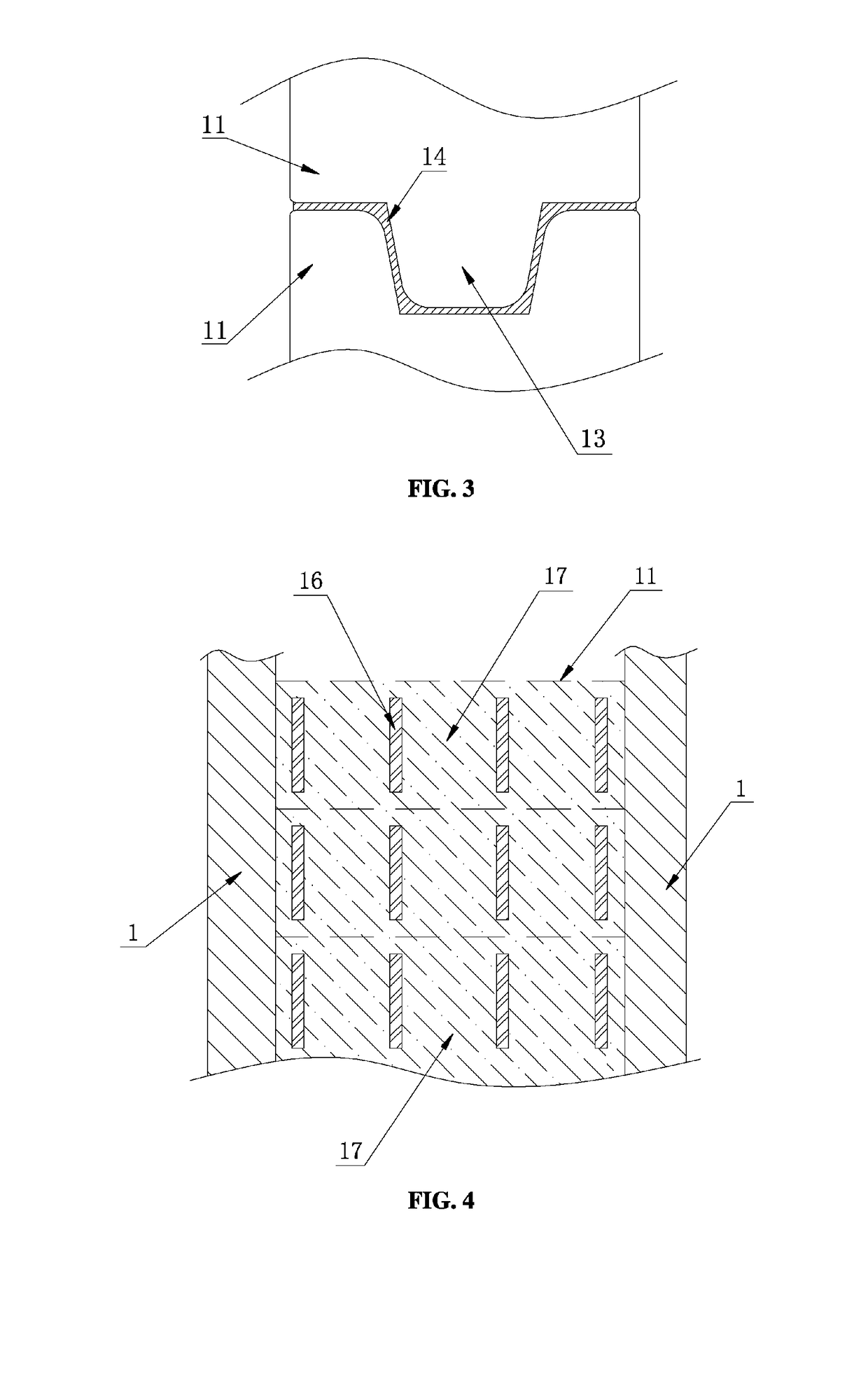Bricks and a method for using such bricks to build dikes in water
a technology of dikes and bricks, applied in the field of construction engineering, can solve the problems of inability to realize direct over-water construction, meet actual requirements, time-consuming and inefficient existing construction methods, etc., and achieve the effects of preventing the impact of currents, winds and waves, and super-waterproof functions
- Summary
- Abstract
- Description
- Claims
- Application Information
AI Technical Summary
Benefits of technology
Problems solved by technology
Method used
Image
Examples
embodiment 4
[0061]FIG. 9 shows an alternative embodiment of a brick provided by the present invention. Likewise, the brick is used as a bottom brick and particularly suitable for the use when the water bottom is gravel. Different from the foregoing embodiment 3, the lower part of the brick body 11 is not a gradually diminishing cone, but may be a rectangle with equal thickness or a trapezoid with a thicker lower part. A number of pit slots 111 are disposed on the bottom surface of the brick body 11 and contain adhesive rubber blocks 112. During use, a concrete pedestal 110 is built at the gravel bottom at first. The upper end face of the pedestal 110 is a flat and horizontal plane. Bottom bricks are stacked up on the pedestal 110 and bonded tightly and resist water through adhesive rubber blocks 112, as shown in FIG. 12.
[0062]The concrete method for building the pedestal 110 may be as follows: a balancing stand 113 is erected at water bottom (as shown in FIG. 10), the height of every side of th...
embodiment 1
Method Embodiment 1
[0063]The present invention further relates to a method for using the aforesaid bricks to build dikes, including the following steps:
[0064](1) drilling a plurality of pile holes at water bottom.
[0065](2) casting concrete into each of the pile holes to form concrete columns 1, wherein the wall in this embodiment is a single-row wall, i.e.: the drilled pile holes and formed concrete columns 1 are extended to form a single row (FIG. 11 is a side view and takes an earth bottom for example; FIG. 12 is a side view and takes a gravel bottom for example).
[0066](3) stacking up a number of the bricks at water bottom and along the concrete columns and having them tightly connected to form a wall, wherein bricks are laid between two adjacent concrete columns 1 (FIG. 13 is a front view and takes a gravel bottom for example). This approach makes the stacking of bricks more flexible and more adjustable, helps maintain the horizontality of bricks and can more easily assure water ...
embodiment 2
Method Embodiment 2
[0071]As shown in FIG. 15 and FIG. 16 (FIG. 15 and FIG. 16 are both side-view schematics. FIG. 15 shows a circumstance of gravel bottom and FIG. 16 shows a circumstance of earth bottom), the method of this embodiment has the following difference from the foregoing method embodiment 1: in the step (1), the pile holes are arranged in two rows; in the step (3), two rows of walls are formed along the concrete columns on the two rows of pile holes, and there is a clearance between the two rows of walls. There is also a step (5): filling a concrete layer 22 in the clearance between two rows of walls to make the two rows of walls connected into a whole-layer wall. In the step (5), before filling of concrete, water in the clearance is pumped out at first. Alternatively, large hornstones or other materials may be put in as foundation filling at first, and then concrete is cast. Or alternatively, 1:1:1 dry concrete is used to harden the mud slurry at water bottom at first, ...
PUM
 Login to View More
Login to View More Abstract
Description
Claims
Application Information
 Login to View More
Login to View More - R&D
- Intellectual Property
- Life Sciences
- Materials
- Tech Scout
- Unparalleled Data Quality
- Higher Quality Content
- 60% Fewer Hallucinations
Browse by: Latest US Patents, China's latest patents, Technical Efficacy Thesaurus, Application Domain, Technology Topic, Popular Technical Reports.
© 2025 PatSnap. All rights reserved.Legal|Privacy policy|Modern Slavery Act Transparency Statement|Sitemap|About US| Contact US: help@patsnap.com



